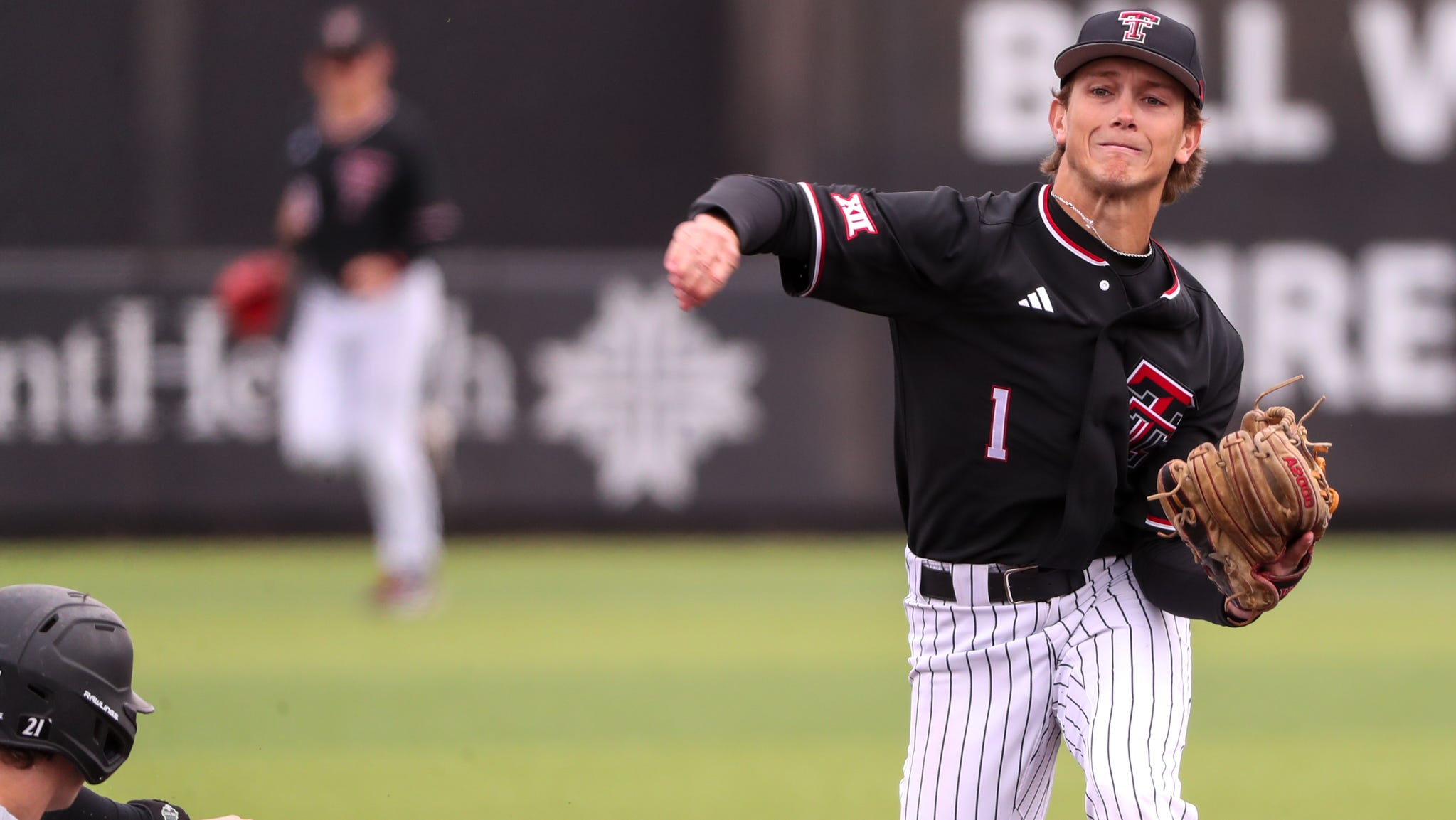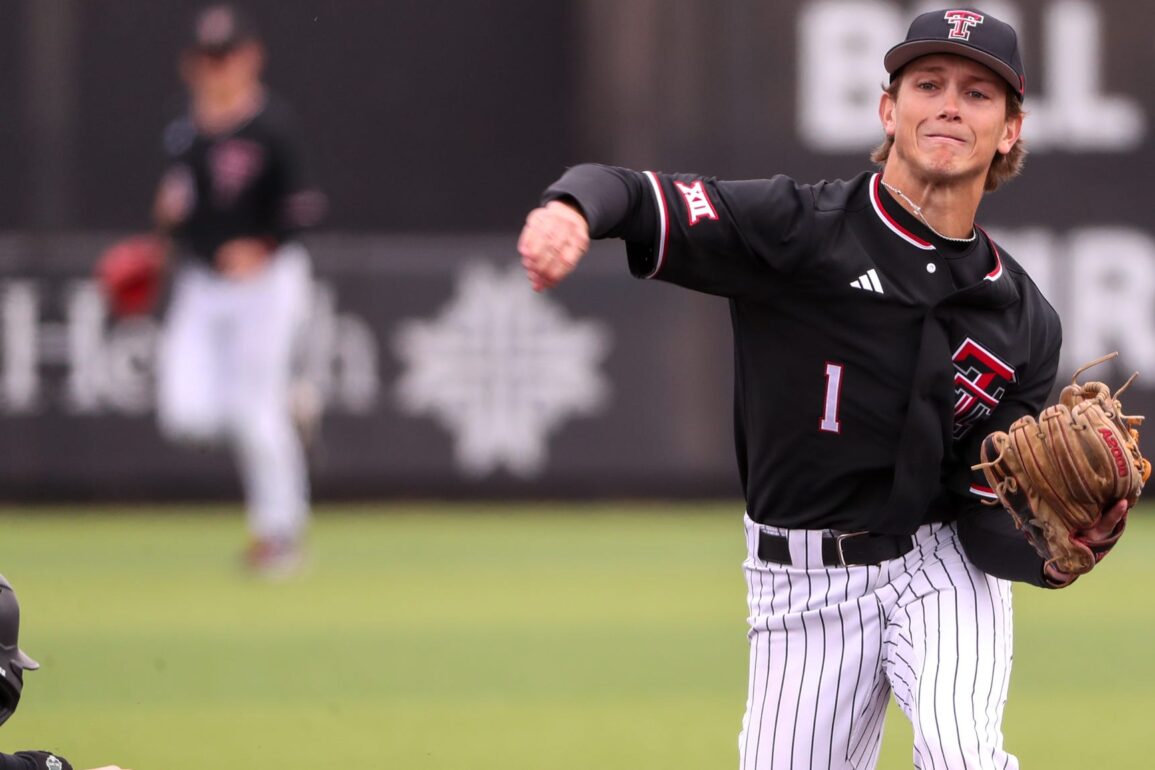
Texas Tech baseball coach Tim Tadlock on 12-inning loss to Cincinnati
The Texas Tech baseball team dropped a Big 12 series opener to Cincinnati 8-7 in 12 innings. Tech had rallied from 4-0 down to lead 6-4 and 7-5.
If a federal judge gives approval on Monday to a multi-billion-dollar settlement of three athlete-compensation antitrust cases, Texas Tech will be ready to go forward with the revenue-sharing plan athletics director Kirby Hocutt and deputy AD Jonathan Botros laid out in December to the Avalanche-Journal.
As is the case at many power-conference schools, football and men’s basketball players will get most of the projected $20.5 million in Texas Tech’s revenue-sharing pool. The Texas Tech baseball program will get 1.9%, or about $390,000.
That’s struck some in the Texas Tech fan base as an unfairly small amount, given the Red Raiders’ four trips to the College World Series from 2014-19 and winning or sharing the Big 12 championship three times from 2016-19. Tim Tadlock, however, said the internal team who put together Tech’s revenue-sharing plan did for baseball “as much as they could possibly do.”
“This is great,” the Tech coach said, “because now you can bring a kid in here and go, ‘Look, with the combination of athletic scholarship and revenue share, we’re going to be able to take care of you — and maybe put a little money in your pocket, maybe for a few guys.’ “
Senior District Judge Claudia Wilken in Oakland, California, gave preliminary approval to the proposed multi-billion-settlement in early October. If she gives final consent on Monday, the terms of the agreement would go into effect for the 2025-26 school year.
Hocutt and Botros said Tech will allocate about 74% of revenue-sharing dollars to football, 17-18% to men’s basketball, 2% to women’s basketball and smaller percentages to other sports. In dollar amounts, it’s about $15.1 million to football, $3.6 million to men’s basketball and less than $500,000 each to the other teams. The percentage breakdowns are designed to roughly reflect the amount of money the programs generate for the department.
During the 2024 fiscal year, the baseball program operated at a $3 million loss, according to the department’s annual financial report to the NCAA. Baseball showed $4.14 million in revenue and $7.18 in expenses.
Told that some on the outside see the baseball program as getting shortchanged in the upcoming revenue sharing, Tadlock said, “Set the record straight: We’re not getting shortchanged. We’ve got roughly almost $400,000 more dollars than we had before. … I’m going to go to bat for Kirby and (university chancellor and president) Dr. (Tedd) Mitchell and Dr. (Lawrence) Schovanec and all those people every day of the week. We have never been shortchanged. Anything we’ve ever asked for in this building or this field, pretty much, they’ve tried to provide it for us — and pretty fast.”
In preparation for the revenue-sharing model, Botros led an internal group made up of professionals from Tech’s compliance department, its business office and management from the individual sports teams.
Tadlock said the amount Tech baseball stands to add in revenue sharing represents “what college baseball’s been fighting for for 40 years” — enough for college players to have all their costs covered. He said they’ve come much closer since 2015, when power-conference schools voted to add cost-of-attendance stipends to scholarships, and since 2021, when the outcome of the NCAA v. Alston court case allowed schools to provide cash awards for academic achievement.
“You’ve been fighting for the ability to pay for a kid’s school and pay for that room and board,” Tadlock said. “And so that revenue share that they gave us allows us to be able to bring a kid in and say, ‘Look, with the combination of these two things (scholarship and revenue share), we are now projected to be able to take care of 27 to 30 guys, books, tuition, fees, room and board.’ “
Outside of each school’s revenue-sharing cap, athletes may still monetize their name, image and likeness in deals with third parties. However, under the proposed settlement, third-party NIL offers that exceed $600 will be subject to a fair-market-value assessment judged by Deloitte.
The settlement proposal imposes new roster limits on teams, but removes scholarship restrictions. Schools may now give every athlete on a team a full or partial scholarship.
Arizona State has publicly announced plans to offer scholarships to the full 34-player baseball roster next year, up from the NCAA’s longstanding limit of 11.7 equivalency scholarships. Texas athletics has publicly announced plans to add 200 new scholarships department-wide, taking its baseball program from 11.7 to 25.
However, any new spending on scholarships up to $2.5 million comes out of a school’s revenue-sharing pool. Hocutt said Tech is not adding scholarships, preferring to give coaches maximum flexibility on how to use their cut of the $20.5 million revenue-sharing pool. For the same reason, Tech also plans to eliminate Alston award payments that count against revenue sharing. Tech has budgeted about $1.8 annually for Alston since 2022.
This post was originally published on this site be sure to check out more of their content.





